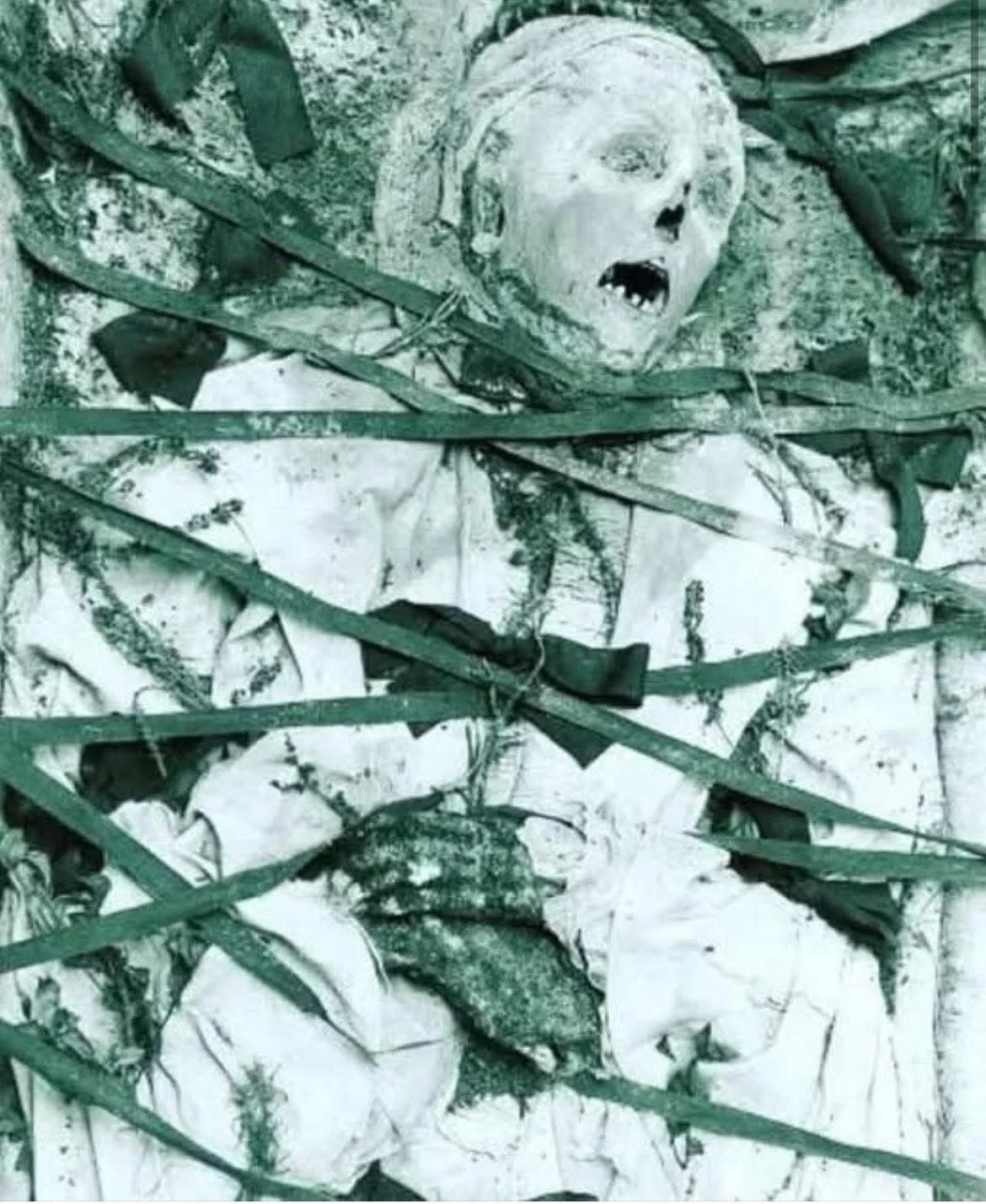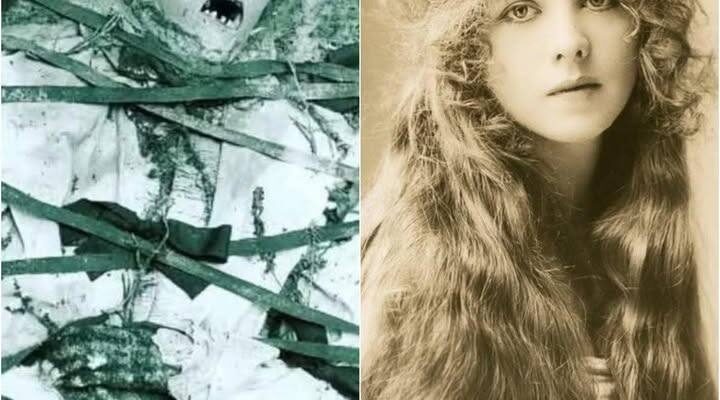In the shadowed heart of the Middle Ages, during the grim reign of the Black Plague, a small village became the stage for a chilling legend—one that would echo through centuries as a tale of fear, vengeance, and the supernatural. Anna Maria Von Stockhausen, branded a witch and vampire, became the embodiment of an unkillable terror, defying death six times and leaving a cursed legacy that haunted the villagers who sought to destroy her.

A Village Gripped by Fear
The Black Plague had already sown death and despair across Europe, and in Anna Maria’s village, paranoia festered like a wound. Crops withered, livestock perished, and whispers of witchcraft spread. Anna Maria, a solitary woman with an enigmatic presence, became the scapegoat for the village’s misfortunes. Accused of consorting with dark forces and drinking the blood of the living, she was branded a vampire witch—a creature so feared that the mere mention of her name sent shudders through the community.
The villagers, driven by desperation and superstition, resolved to rid themselves of this perceived evil. What followed was a series of brutal attempts to end Anna Maria’s life, each more desperate than the last, yet none could keep her in the grave.
Six Defiant Returns from Death
The first attempt was a hanging. Anna Maria was strung up on a gnarled tree at the village’s edge, her body left to sway in the wind. But days later, her grave was found disturbed, the earth clawed apart as if by desperate hands. Rumors swirled that she had been seen in a nearby village, alive and unharmed.
Enraged and terrified, the villagers captured her again. This time, they bound her to a wooden plank and drowned her in a nearby lake, watching as her body sank beneath the murky waters. Yet, when they retrieved her corpse to ensure her death, the grave they buried her in was found empty two days later. Whispers spread of a dripping, worm-ridden figure lurking near her old home, her decomposing form moving with unnatural purpose.
The third attempt was more brutal. A stake was driven through Anna Maria’s heart, a ritual believed to pin a vampire’s soul to the earth. She was buried once more, this time with a guard posted at her grave to ensure she stayed dead. For a moment, it seemed the village had triumphed. But when the guard failed to return after four days, a priest ventured to the site. What he found was a scene of horror: the guard’s rotting corpse, his throat torn out and chewed, lying beside the empty grave. Anna Maria had vanished again.
Three more times, the villagers tried to end her. They tracked her to the edge of town, where a furious mob tied her to a scarecrow in a cornfield and set it ablaze. But a sudden, inexplicable storm doused the flames, leaving only her lower half charred. Each attempt to kill her was met with failure, as though some unholy force shielded her from death.
The Vampire Hunter’s Intervention
The tale of Anna Maria’s defiance drew the attention of a vampire hunter, a religious fanatic whose zeal was matched only by his curiosity. He arrived in the village as the storm raged over Anna Maria’s half-burned body. Unlike the villagers, who saw only a monster, he approached her with a strange reverence. “God must have other plans for you,” he said, bowing before the tormented woman. He asked, “Woman, why won’t you go to your death?”
In a voice shrill and raspy, Anna Maria revealed her truth. She had cursed the villagers for their accusations, their relentless persecution fueling her defiance of death. She made a simple yet chilling request: to be buried far from the village, in a place untouched by their hatred. If they refused, she vowed to return again and again, spilling the blood of every soul in the village.
A Legacy Sealed in Fear
Faced with her unyielding will and the terror of her curse, the villagers relented. They buried Anna Maria far from their lands, in a place shrouded in secrecy. From that day forward, the sightings ceased, and the village fell silent. But the fear of her return lingered, etched into the stories passed down through generations.
Was Anna Maria truly a vampire witch, or was she a victim of a village consumed by fear and superstition? Her story, steeped in mystery, remains one of the most infamous medieval nightmares. The villagers’ failure to kill her six times cemented her legend as an unkillable terror, a cursed legacy that warns of the dangers of fear-driven vengeance. Even today, her name is whispered with unease, a reminder that some forces—whether supernatural or born of human cruelty—cannot be easily laid to rest.



